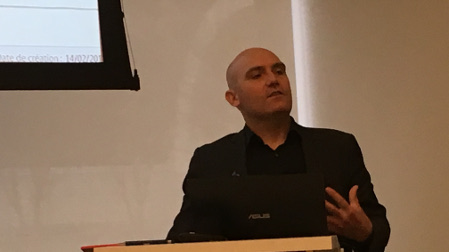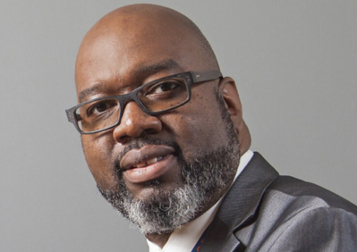IMF: Unleashing the Benefits of File-Based Content
ARLINGTON, VA.—Interoperability in the file-based world has been an ongoing issue for media companies both large and small. In its campaign to launch digital cinema over the past decade and move away from reels to file-based systems, Hollywood studios—along with manufacturers and rights holders—attempted to resolve the problem of media production and distribution by collaborating with SMPTE to develop the Interoperable Master Format (IMF). The first iteration of this standard, known as IMF v1.0 was released in 2011, with v1.1 now in its final draft.
Hollywood has long been a global industry, but the capabilities of digital technology—including the increasing use of content localization—have made it even more so. With IMF, these processes are made easier, more cost-effective and more widespread. IMF was the subject of a recent workshop hosted by PBS in Arlington, Va., and sponsored by MediaAnswers and Tedial, a Spanish-based developer of advanced media asset management systems.
MXF: ‘15 YEARS OF CHAOS’

François Abbe, president of mesclado
When media companies first transitioned from the tape-based world to file-based, a standard was needed to manage the production process from editing to distribution; hence the birth of the Media eXchange Format (MXF) approximately 15 years ago. But the initial promise of MXF never really materialized, according to François Abbe, president of mesclado, a French-based IT architecture and consultancy firm. “We got the worst of the tape world and the worst of the IT world,” and because MXF resulted in a plethora of proprietary formats, it “brought 10-15 years of chaos,” he said. “And we’re still debugging it.”
The industry needed a new methodology that would provide a universal mastering standard for all media industry players, provide lower storage and distribution costs and allow the media to be distributed on an increasing array of platforms.
Unlike MXF, IMF is component-based, offering a two level design: the Core, which is considered the “wrapper” for the digital file, and Applications, which are format-specific. The current applications—all supporting the JPEG2000 codec—include Application 2, which supports HD (1920x1080) and SDR. Application 2E—an extension of Application 2—supports HDR, wide color gamut and image resolutions up to 8K and is currently being updated. Other applications are also being considered, with the latest, Application 5, covering color grading.
Get the TV Tech Newsletter
The professional video industry's #1 source for news, trends and product and tech information. Sign up below.
IMF’s Core, also known as the OPL (output playlist) wrapper is based on the AMWA AS-02 spec and is considered the “technical”—or in layman’s terms the “delivery instructions”—of the standard, while the CPL (compositional playlist) is the editorial or “recipe” component (formerly known as the EDL). A CPL can have only one application. MXF files within the Core are known as “tracks” which are defined separately as audio, video and data.
THE ‘RECIPE’
To simplify the technical aspects, Abbe used the analogy of spaghetti and meatballs, where the shopping list of ingredients (tomatoes, pasta, parmesan cheese, etc.), is considered the OPL. “The OPL is going to tell you whether it’s canned tomatoes and meatballs or fresh or dehydrated,” he said, while the CPL is how one makes the spaghetti and meatballs. “The OPL is the size of the meatballs, the CPL is how you make the meatballs,” he said, adding “if you want gluten-free or have a vegan friend for dinner, that would involve a change in the CPL.”
As mentioned before, content localization is one of the main drivers of the IMF standardization. The increasing use of VOD and OTT bring with it an explosion of new versions, along with a wider variety of languages, and differing cultural norms in countries worldwide—where one person’s naked shoulder may be defined as nudity in another. IMF provides an easier method to create different versions, using the Universally Unique Identifier (UUID) within the XML file.
The UUID is the key to the IMF workflow; “without it we are dead,” Abbe said.
Since it is based on the JPEG2000 codec—which handles fairly large file sizes—IMF is of minimal use to broadcasters in its present iteration. While attempts have been made to add other codecs which broadcasters use, including Sony’s XAVC, Panasonic’s AVC-Ultra and Avid’s DNxHD, the thinking in the Hollywood community is that such attempts would hinder the forward progress of IMF, according to Abbe, who added that the BBC’s announcement at IBC that it planned to use Apple’s ProRes as the codec of choice for its IMF files was met with some consternation.
However, according to workshop attendee Renard Jenkins, vice president of operations for PBS, broadcasters should be following the standardization process of IMF as it is expected to extend beyond cinema in the future.

Renard Jenkins
“PBS has been participating in the IMF user group and SMPTE IMF working group for over a year and half,” he said. “We see IMF as a potential means to streamline our preparation and delivery process to digital delivery destinations (D3s). As the standard continues to mature and include more broadcast elements this has the potential to be of great use to distributors like PBS throughout our entire media supply chain.”
Jay Batista, general manager, North American Operations for Tedial—an early adopter of IMF—discussed the company’s philosophy behind its MediaSet platform, which streamlines the management of media assets. “We are an open standards-based company,” he said. “Our designs are meant to interoperable.”
The IMF Roadshow also stops in New York today and wraps up in Los Angeles on Friday, Feb. 17.
Tom has covered the broadcast technology market for the past 25 years, including three years handling member communications for the National Association of Broadcasters followed by a year as editor of Video Technology News and DTV Business executive newsletters for Phillips Publishing. In 1999 he launched digitalbroadcasting.com for internet B2B portal Verticalnet. He is also a charter member of the CTA's Academy of Digital TV Pioneers. Since 2001, he has been editor-in-chief of TV Tech (www.tvtech.com), the leading source of news and information on broadcast and related media technology and is a frequent contributor and moderator to the brand’s Tech Leadership events.

